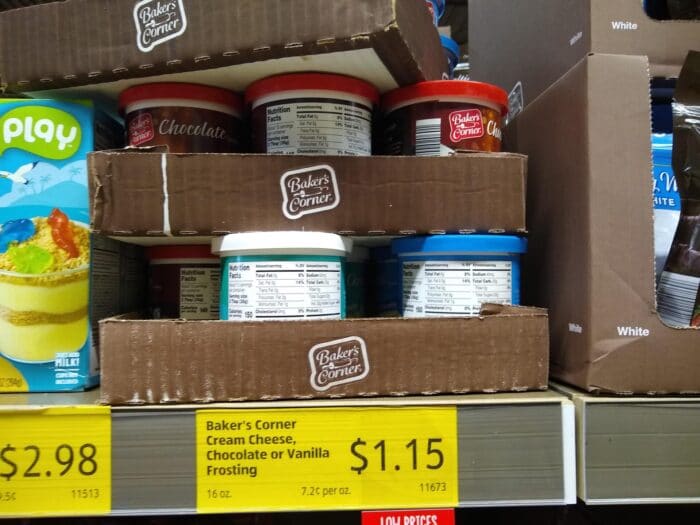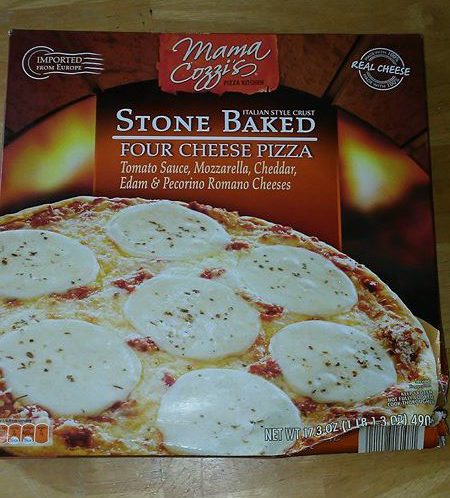The Simple Genius of an Aldi Mixed Case

If you’ve shopped at Aldi for a while, you may have noticed a little quirk about some products, although you may not have paid it much mind. You might have noticed, for instance, that frozen sausage patties are sold in a single case that contains both original and maple-flavored patty options. Or you may have noticed that a single yogurt box in the refrigerated aisle contains both strawberry and blueberry yogurt cups.
You’ll see this trend among all the various parts of the store: with Regular Buys, with Seasonal Favorites, with Aldi Finds. You’ll see it with regular cake mix or cake frosting. You’ll see it when Aldi offers two Aldi Finds in the same product listing, like a two-pack of hair towels or a body wrap. And you’ll also see it when Aldi sells an assortment of products, like various silicone utensils.
Aldi has a name for these kinds of products. It’s called a mixed case. According to Aldi,
A mixed case is a single case comprised of two to three varieties of a given product. For example, a mixed case may contain three units of Creamy Peanut Butter along with three units of Crunchy Peanut Butter. Not all ALDI products require a mixed case.
A mixed case, like the name suggests, is a group of different products that all come in the same single case. Think of it like a variety pack where customers have a bunch of choices to pick from inside of a box.
You may also notice that most products in an Aldi store have their own product label. One product, one price. But mixed case products aren’t like that. Sometimes you’ll find products where two or even three products are in one case and share the same price sticker. What’s more, those three products share the same product code. That means that when you go to buy it, the products will all show up the same on the receipt.
If you see a mixed case, you know it comes from a single supplier. It’s usually more work for suppliers to put together a mixed case, but it can pay off on a couple of fronts. For one thing, because Aldi likes mixed cases, suppliers who can furnish them have a leg up on the Aldi supplier competition. For another, mixed cases, as we’ll see shortly, sell better, giving the supplier a better chance to continue selling products to Aldi.
From Aldi’s perspective, there’s a lot to like about mixed cases. It builds a little variety into a store’s limited inventory, but it is also a brilliant sales tactic.
Consider this scenario: a customer comes up to a mixed case and sees three kinds of syrup, original, lite, and butter. Maybe the customer likes original but is also intrigued by these other options. That customer might…
- Just get original. Aldi makes a sale.
- Get original, but also try lite and / or butter just to see how they compare. Aldi makes three sales.
- Realize the store is out of original, but get lite and / or butter because they need syrup. Aldi loses the sale on the original but makes one or maybe two other sales.
See what happened there? By offering a mixed case, Aldi knows it has a higher probability of selling more than it would have with a standard single-item case. It’s a passive upsell.
Are there downsides to a mixed case? Obviously, if you’re a customer there can be some irritation if you have to rifle through a case trying to find what you want, and that irritation can grow if you fail to find the thing you need. Yet that’s probably not going to chase too many customers away, and, like I said a moment ago, you’re just as likely to grab one of the remaining alternatives.
On the whole, then, mixed cases are a win for Aldi, which is why you will see more than a few of them in any given store … waiting for the next customer to be lured in.







EXCELLENT, Joshua! How many of us have seen those mixed cases without thinking about this. The salad dressing is my nemesis. I want the Tuscan Garden California French Style Dressing but it’s been “as scarce as hen’s teeth” since sometime last year. So, I dig, dig, dig and sometimes buy another variety.
IMO, another reason for the mixed case is too allow Aldi to offer more products in less space. As an example, instead of having rows of cans on the shelve like traditional grocery stores, they have boxes of cans on the shelves. If one box contains three different choices, that box takes up less space on the shelf than three boxes with one choice in each.
Absolutely. It’s a way for Aldi to build in a larger selection of products within its limited footprint.
Thanks for the explanation, I see mixed boxes often and just thought that this product was almost empty so they put that product that was almost empty together.lol!
The problem I have with the mixed case is when it is not evenly distributed. For example, I like the Parmesan and Romano cheese but there is always more Parmesan than the Parmesan and Romano. So I will normally buy two of the Parmesan and Romano when available since it will be out of stock sooner.
It almost makes sense, except for the UPC. Aldi need to be able to assess the relative popularity of the varieties. I can sorta-kinda imagine other ways to do that, but they are more labor-intensive and less reliable than differentiating the UPC. But then, the less I know about retail, the better I will sleep.
I found this out the hard way with their tuna pouches. I wanted just regular tuna, but ended up buying the lemon pepper, which I really didn’t want. I didn’t discover it until I got home. Now, I make sure I look before choosing.